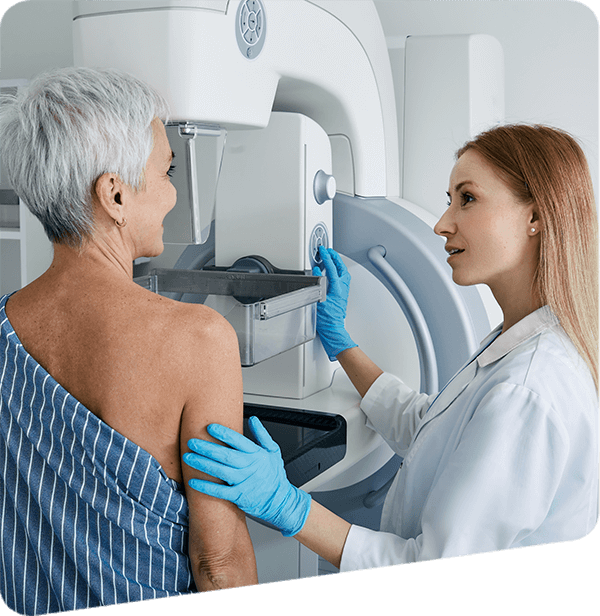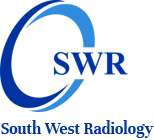Mammography

Mammography
What is a Mammogram?
Scanning
- Check-In: When you arrive for your mammogram, you'll go through the check-in process. You may be asked to provide some personal and medical information.
- Preparation: You'll be asked to undress from the waist up and put on a gown. It's recommended to wear a two-piece outfit for ease during the procedure.
- Breast Compression: The mammogram machine consists of two plates. Your breast will be placed on the bottom plate, and the top plate will gradually lower to compress the breast tissue. This compression is necessary to spread out the breast tissue and obtain clearer images. While the compression can cause some discomfort, it is usually brief.
- Image Capture: X-ray images are taken from different angles. The technologist will typically take images of each breast from top to bottom and side to side.
- Radiologist Review: The images are reviewed by a radiologist, a doctor specially trained in interpreting medical images. They will look for any abnormalities or signs of breast conditions, including tumors or masses.
- Additional Views (if necessary): In some cases, the radiologist may request additional views to get a more detailed or specific look at an area of concern.
- Comparison with Previous Mammograms: If you have had previous mammograms, the new images will be compared to the older ones. This comparison is important for identifying any changes over time.
- Results: Your mammogram results will be sent to your healthcare provider. If any abnormalities are found, further diagnostic tests may be recommended.
We are committed to providing comprehensive and affordable Mammography to our patients.
FAQs! Need Help?
Our Services
Our Locations
Campbelltown
Building B, Suites 5-9
4 Hyde Parade Campbelltown
Liverpool
Ground Floor, 51 Goulburn St, Liverpool NSW 2170
Minto
North Entrance Car Park
Shop 2A – Minto Mall,
10 Brookfield Road Minto, NSW, 2566
Moorebank
Moorebank Shopping Village
Shop 14C, 42 Stockton Avenue, Moorebank NSW 2170
Wetherill Park
Shop 233 & 235, Stockland Wetherill Park
561 – 583 Polding Street
Wetherill Park NSW 2164
Moorebank Ultrasound Centre
Shop 4, 42 Stockton Ave, Moorebank NSW 2170
Mount Annan
Shop 13-14 Mount Annan Marketplace
11-13 Main Street
Mount Annan NSW 2567
LIVERPOOL
Ground Floor, 51
Goulburn St
Liverpool, NSW, 2170
- M-F: 8.30am - 5.30pm
- Sat: 8:30am - 12:30pm
- Sun: Closed
CAMPBELLTOWN
Park Central, Building B
Ground Level - 4 Hyde Parade
Campbelltown, NSW, 2560
- M-F: 8.30am - 5.30pm
- Sat: 8:30am - 12:30pm
- Sun: Closed
MINTO
North Entrance - Minto Mall
10 Brookfield Road
Minto, NSW, 2566
- M-F: 8.30am - 5.30pm
- Sat: 8:30am - 12:30pm
- Sun: Closed
MOOREBANK
Moorebank Shopping Village
Shop 14C/42 Stockton Avenue
Moorebank, NSW, 2170
- M-F: 8.30am - 5.30pm
- Sat: 8:30am - 12:30pm
- Sun: Closed
MINTO
North Entrance - Minto Mall
10 Brookfield Road
Minto, NSW, 2566
- M-F: 8.30am - 5.30pm
- Sat: 8:30am - 12:30pm
- Sun: Closed
MOOREBANK
Moorebank Shopping Village
Shop 14C/42 Stockton Avenue
Moorebank, NSW, 2170
- M-F: 8.30am - 5.30pm
- Sat: 8:30am - 12:30pm
- Sun: Closed

